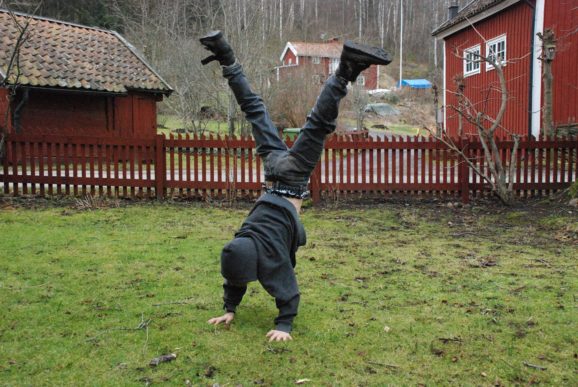I was observing a classroom a few years ago when I noticed the following scenario. A history teacher was lecturing from the front of the room when she noticed that a student was paying little attention to the lecture. Continue Reading…
At the end of the course Worksheets Don’t Grow Dendrites, which I teach to administrators and teachers all over the world, we celebrate the vast amount of information that we have learned. Some participants say that they learn more from me in one day than they learn in some workshops in several days. Continue Reading…
I am a trainer for The 7 Habits of Highly Effective People. During that workshop, a concept is taught called the emotional bank account. The emotional bank account is a metaphor for the relationships we establish with one another. We make deposits (positive interactions) and withdrawals (negative interactions) in other people’s emotional bank accounts. Continue Reading…
In every school, there are teachers who very effectively manage students. At first, it was thought that those teachers had some big bag of tricks that other teachers didn’t have, which helped them to know just what to do in various situations. What the research is telling us is that effective classroom managers spend an inordinate amount of their time during the first few days and weeks of school establishing their expectations and procedures, in other words, their rituals. Continue Reading…
A cartoon was shown of a classroom where students were literally hanging from the ceiling, tied by their feet. Outside the door, there was a sign that read In-School Suspension. This cartoon shown in a workshop on classroom management practically ensures a chuckle or two. That chuckle goes a long way in creating a climate conducive for learning. Continue Reading…
It is 8:55 a.m.—time to change classes in Washington High School. Students are relieved because they get to actually move their bodies to the next location. However, in most middle or high schools, that is probably the last time they will get to move for the next 55 minutes or until the bell rings for the next period. Continue Reading…
As rhymes are brain compatible, I wrote an original one to symbolize what we teachers and administrators do to students in schools. It is as follows:
Students can’t talk in class.
They can’t talk in the hall.
They can’t talk in the cafeteria.
They can’t talk at all!
You might think that when students are sitting quietly and looking at you, you have their undivided attention. Let me tell you something you’ve probably figured out already. Students can be looking dead in your face and not paying a bit of attention to what you are saying. Continue Reading…
Research on the brain began more than 50 years ago when Dr. Roger Sperry attempted to control seizures in epileptic patients by severing the corpus callosum, the structure that joins the left and right hemispheres of the brain. These patients appeared to function normally but would use either the left or the right hemispheres of the brain depending on what the task required. Continue Reading…
Your brain has but one purpose: to help your body survive in the real world. Notice that I wrote in the real world. In reality, the body is not confined to a wooden or metal desk 5 to 6 hours per day. Continue Reading…
Have you noticed that when you smell a particular odor, memories come flooding back? Maybe it’s a scent from your childhood that brings to mind your mother cooking one of your favorite foods in the family kitchen. Maybe it’s a fragrance that a particular person wears, and when you smell it, all of the memories of your experiences with that person are recalled. Continue Reading…
Have you ever stopped to think about how the colors in this world affect you? I didn’t think much about it until I made a mistake with color in my home. My husband and I dined with friends who had just moved into a beautiful new house. Their dining room was painted a cranberry color that provided an elegance to the already exquisite surroundings. Continue Reading…
A school system was in the process of building five new schools to house their increasing student population. Having read the research on the detrimental effects of fluorescent lighting, I shared with the architects rationales for including additional windows or a different type of lighting in the construction of these new buildings. The experts thanked me for my input but proceeded to include fluorescent lighting in plans for each of the five new edifices. Continue Reading…
Patrick is constantly calling your name. Even when he knows the answers to questions, he needs your assurance that his answers are correct. You are sick and tired of reprimanding him for talking out loud without being called upon first. Continue Reading…
Have you ever walked down the hall in a high school and seen a teenager with his pants hanging low and a cap on his head? Have you witnessed one teacher ask the student to pull up his pants and take off the cap, and he walks by as if he has not heard the teacher’s request? Continue Reading…
Have you ever noticed a group of middle or high school students who change classes, and in one teacher’s class they are well behaved, but in another teacher’s class they are terrors? Could it be that the former teacher has detour signs in place to steer students around potential behavior problems that the second teacher does not? Continue Reading…
Teachers ask this question of me a great deal, What is more memorable to the brain– typing on a computer or writing in long hand? Guess which one! If you said writing, you would be correct. Continue Reading…
Think back to when you finished high school. No doubt you can recall the names of many students in your senior class who did not have the grades or SAT scores to place in the top 25th or even the top 50th percentile of graduating seniors. Continue Reading…
Have you flown in an airplane recently? If so, you probably recall that the flight attendants don’t simply tell you what to do with your seat belt and the other myriad instructions they need to give. They have to show you. Why? Continue Reading…
This all-important strategy is used in at least two places in the real world – sports and medicine. Coaches advise players to picture themselves hitting the home run or scoring the touchdown before the game even begins. Continue Reading…



















